
The stories of these closeted notables range from bittersweet to tragic, and some are just plain outrageous. Times have changed, we can agree, heading into National Coming Out Day on Saturday.
February 22 2017 7:17 PM EST
May 26 2023 2:03 PM EST
By continuing to use our site, you agree to our Private Policy and Terms of Use.

The stories of these closeted notables range from bittersweet to tragic, and some are just plain outrageous. Times have changed, we can agree, heading into National Coming Out Day on Saturday.
Looking at these stories through contemporary eyes is a bit unfair. A few generations ago, the concept of gayness was that it was something you did, rather than something your were. Kind of like a behavior you were trying to control, like smoking or nail-biting. Basically, a bad habit. People believed you just needed to buck up and those lavender passions would evaporate. Also, public condemnation and legal punishments were still very severe. Roy Cohn's closet was particularly odious, but what do we make of the sunlit closet of Sally Ride? Did it matter to her that she wasn't out publicly? Read below a few examples of folks who -- if you believe accounts of their lives shared only after death -- never got around to making the big revelation before the closet was sealed forever.
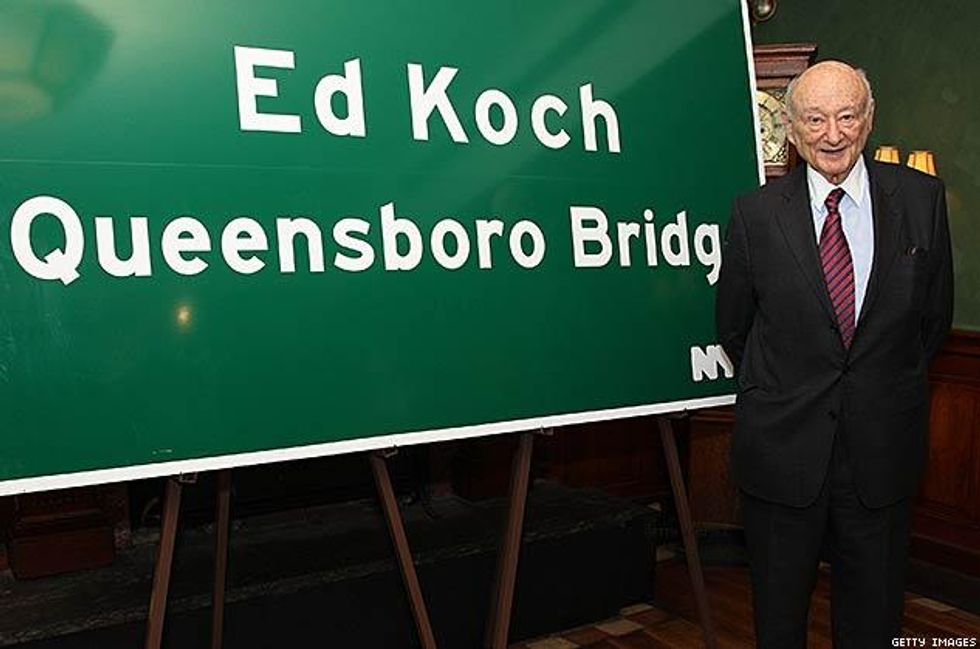
The mayor of New York City during the devastating early years of the AIDS crisis, Koch was criticized by many for insufficient action to address the epidemic. Activist and playwright Larry Kramer even called him "an evil man" who helped gay men die. Some of his critics also openly called him a closeted gay man. A longtime friend, journalist Charles Kaiser, confirmed after Koch's death in 2013 that the former mayor was indeed gay. But he was not self-hating, Kaiser said, merely from a generation that did not address such matters publicly. Kaiser also said Koch regretted not doing more about AIDS but that he did take many pro-gay actions, including, while a U.S. congressman, introducing the first version of what is now known as the Employment Non-Discrimination Act.
{C}
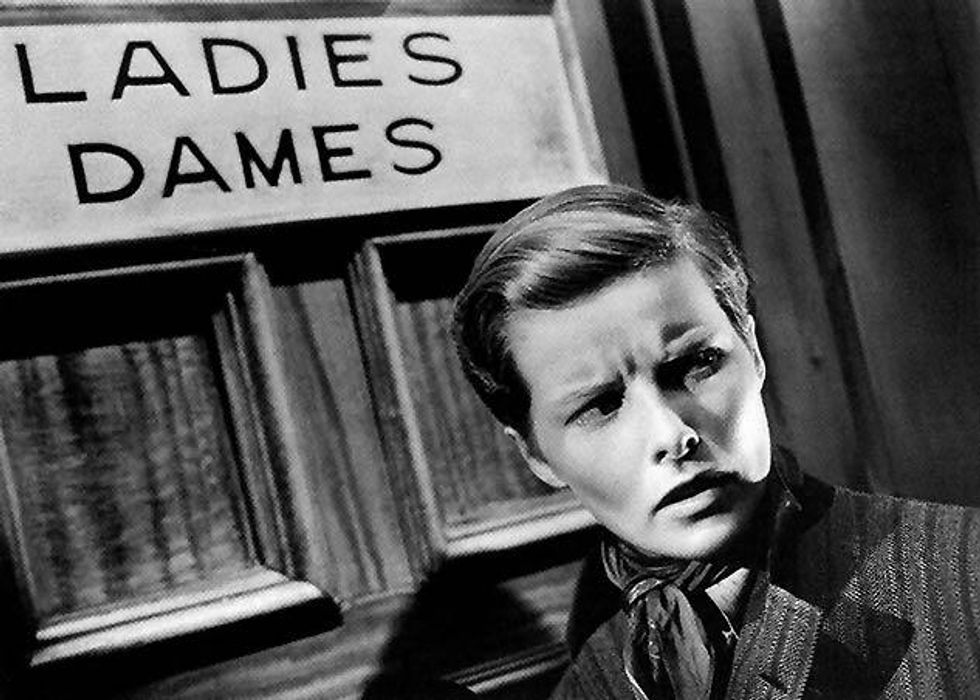
The original gender-norm rebel, Hepburn was iconoclastic in her choices of film roles, her choice of men's clothing, and her lovers. Scotty Bowers's 2012 book Full Service: My Adventures in Hollywood and the Secret Sex Lives of the Stars lays raw the sex lives of the bronze, golden, and silver ages of Hollywood. His decades as a procurer for the various colorful sexual personalities in Hollywood and Beverly Hills spell out in stark terms the specifics to which the gay rumors had only just alluded. Names are named, among them Hepburn, Spencer Tracy, Cole Porter, the Duke and Duchess of Windsor, Vivien Leigh, Cary Grant, George Cukor, Anthony Perkins, and Rock Hudson. He claims to have arranged over 150 hook-ups for the Oscar-winning actress and claims that her famed relationship with Spencer Tracy was a sham. Is Bowers to be believed? Cynic, truth-seeker, and homosexual Gore Vidal insisted that Bowers's stories hold up. -- Christopher Harrity
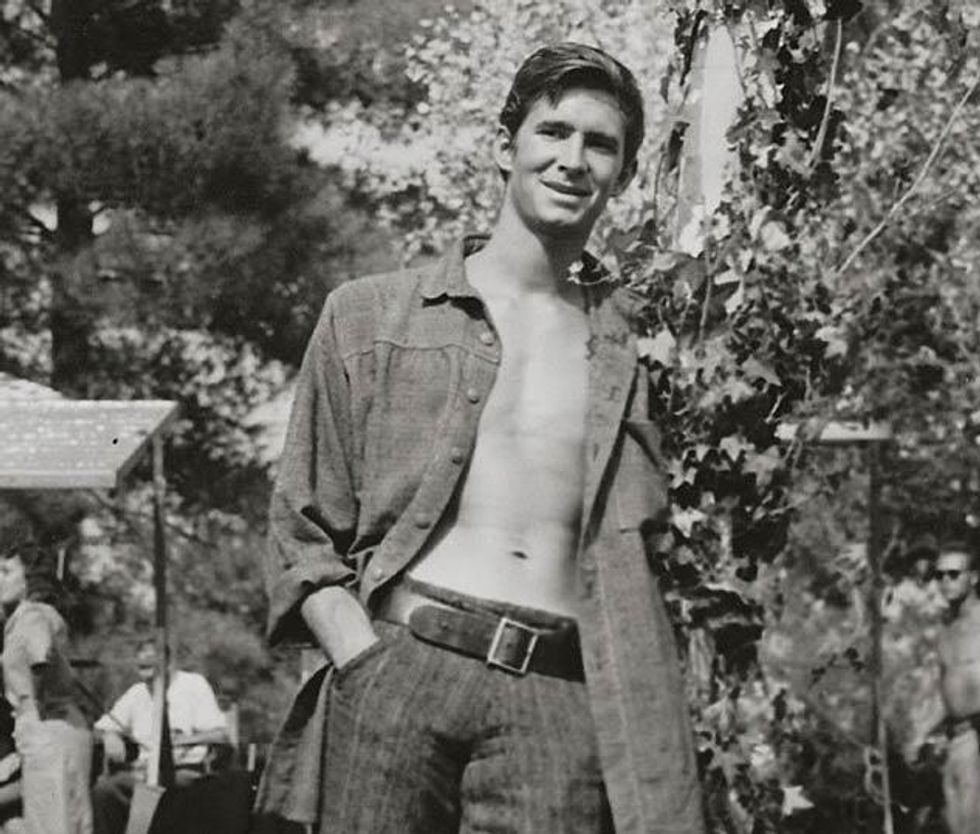
The dark and brooding boy next door had a secret, and that secret was that his boyfriend was the sunny and athletic boy next door Tab Hunter. Perkins's appeal was a sincere and vulnerable personality with a face that revealed emotions that lurked beneath the surface. He was an award-winning actor early in his career as well as a recording star with Billboard-charted hits. His fame exploded with the release of Hitchcock's Psycho, and forever after he was typecast as the "disturbed young man." There are photos of Perkins and Tab Hunter on arranged double dates as they sit next to each other in movie houses with the girls flanking the outside. Everyone looks miserable. Off camera, Perkins suffered great anxiety over his sexual orientation and underwent therapy to help overcome his attraction to other men. He eventually married a woman, photographer Berry Berenson (who was a passenger on the hijacked American Airlines Flight 11, which crashed into the World Trade Center September 11, 2001), and fathered two sons, but according to TCM never fully overcame his personal demons and suffered the dismay of learning he was HIV-positive via a story in The National Enquirer.-- C.H.
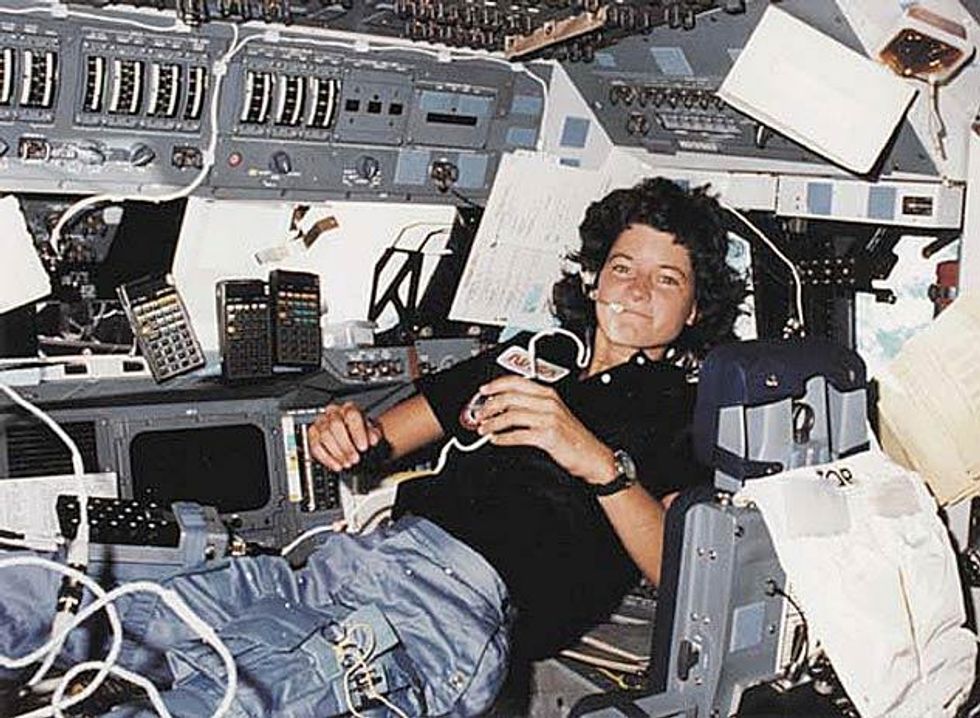
The first American woman in space, Ride had a long-term same-sex relationship, something that didn't become known until she died in 2012; her obituary listed her female partner, Tam O'Shaughnessy, as a survivor. Ride, who flew multiple space missions, was married to a man, fellow astronaut Stephen Hawley, when she met O'Shaughnessy; the revelation of their divorce coincided with her retirement from NASA. "She was so eager to promote and protect the space agency, she might well have hidden her private life to help preserve its image," speculates biographer Lynn Sherr in the just-published Sally Ride: America's First Woman in Space. Ride also had witnessed her lesbian sister, Bear, being forced out of a job in the clergy due to her sexual orientation, something else that may have kept the astronaut in the closet. Ride and O'Shaughnessy went on to found Sally Ride Science, an organization that encourages girls to pursue scientific careers. Their relationship was an open secret to employees there, known but not discussed, but Ride gave O'Shaughnessy permission to open her closet door posthumously. -- T.R.
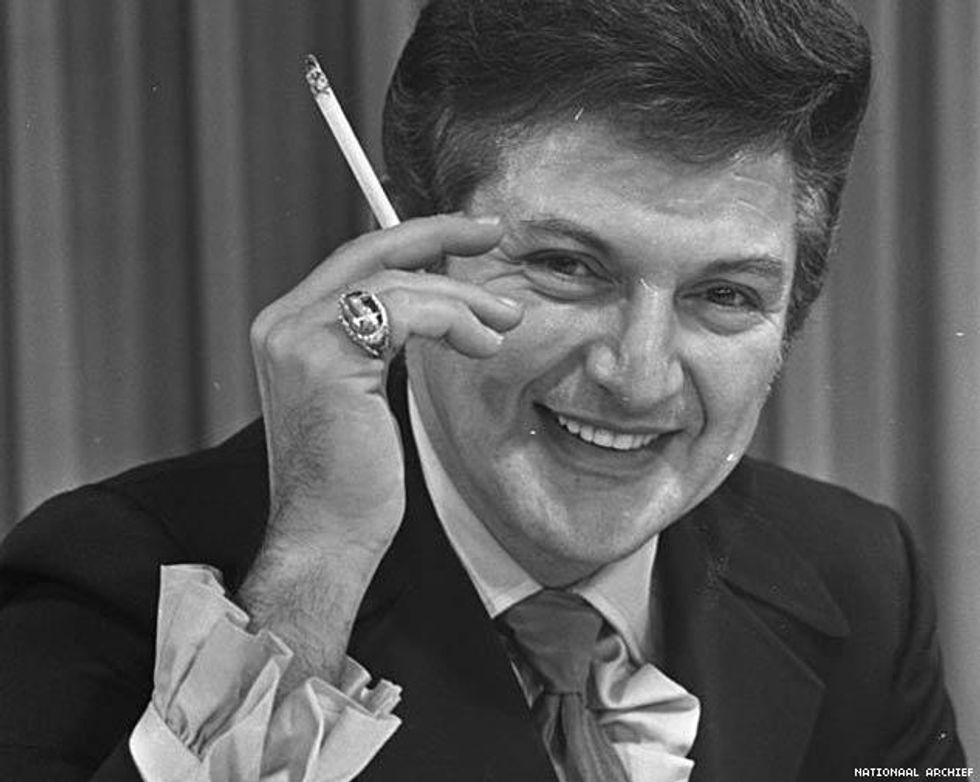
Wladziu Valentino Liberace is perhaps the most dramatic example of denial on the list. Putting the flame in flamboyant, Liberace lived with his lover, assistant, and co-perfomer Scott Thorsen for five years before Thorsen sued him for palimony. After gossip magazines began printing gay-baiting articles about him, he took legal action against both the Daily Mirror in the U.K. and Confidential magazine here in the States, testifying in his libel case that he was not a homosexual and had never participated in homosexual acts. Liberace died in 1987 of AIDS-related pneumonia, but his personal physician persisted in denying the pianist had AIDS. After an autopsy, Riverside County, Calif., coroner Ray Carrillo finally confirmed that Liberace had indeed died "of opportunistic diseases caused by AIDS." -- C.H.
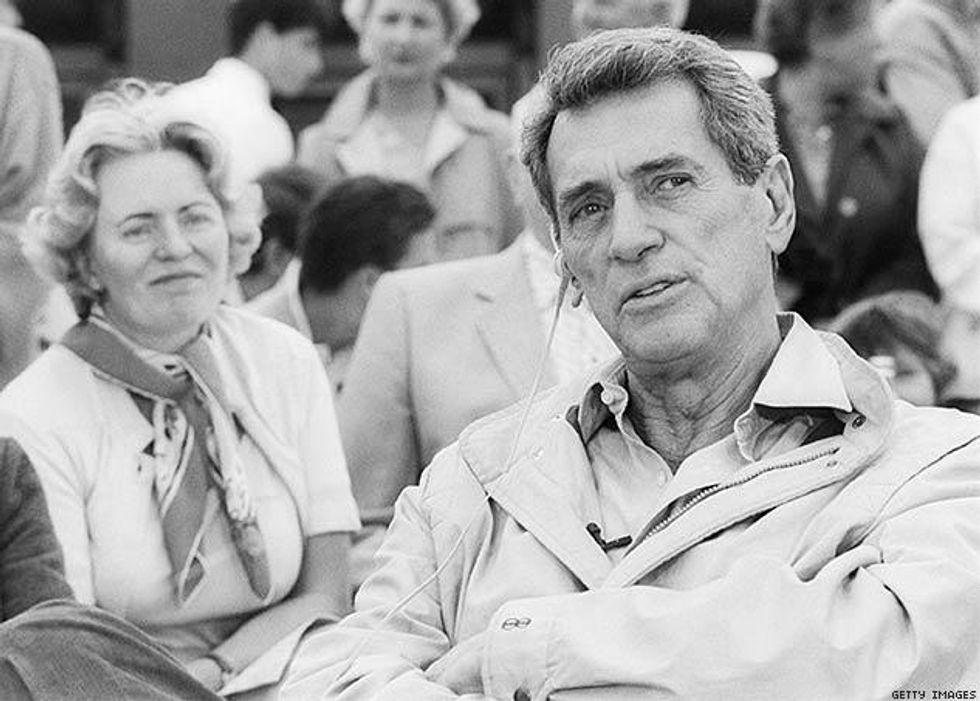
The 6-foot-5 actor was the king of the dreamboats. His light comedy romps with Doris Day as well as his more serious films like Giant and Seconds allowed him to also be considered as a serious actor. His television series McMillan & Wife kept him on our screens once a week, and his last performances were on the campy, iconic Dynasty. Rock Hudson tried to play both sides of the closet. He was very out at his legendary pool parties. Folks such as Armistead Maupin have written about their sexual experiences with him. But he also married his agent Henry Wilson's secretary Phyllis Gates. Gates was revealed to be a lesbian later in The Advocate. The walls of the closet all but evaporated when Hudson began being seriously ill with AIDS. Even then he said it was from blood transfusions. Regardless, Hudson's death from AIDS complications resulted in enormous public awareness of the disease and as Morgan Fairchild said, "Rock Hudson's death gave AIDS a face." -- C.H.
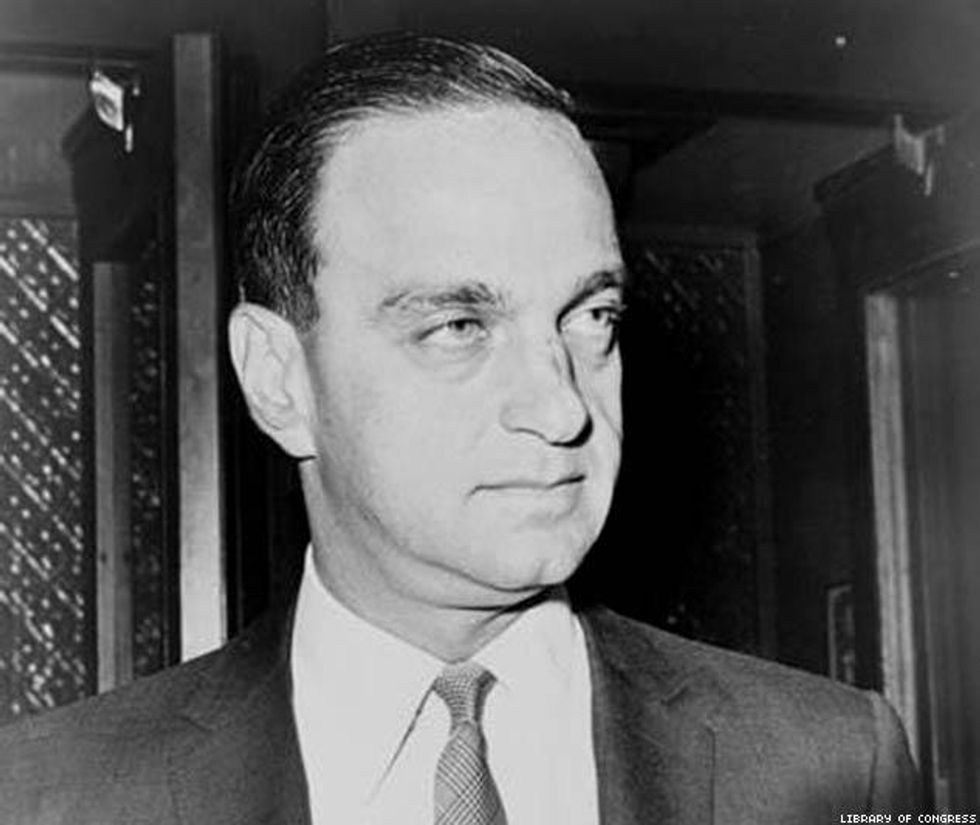
Roy Cohn is perhaps best known in popular culture as a leading antagonist in Angels in America, the Pulitzer Prize-winning play that was later adapted into a popular HBO series, in which Al Pacino portrayed Cohn in all his closeted hypocrisy. During the Red Scare era of American history, Cohn was an attorney who, under the authority of Sen. Joseph McCarthy, led a series of high-profile prosecutions of suspected members of the Communist Party. A prominent member of the U.S. Department of Justice's prosecution team, Cohn was a major player in the 1951 trial and conviction of Ethel and Julius Rosenberg, pulling strings as well as pulling false testimony from Ethel's brother, David Greenglass, in order to secure the guilty verdict. He was also a major player in the Lavender Scare, one who helped convince President Eisenhower to bar gay people from employment with the federal government by promoting fears that they would pass on secrets to Communists abroad. Cohn would go on to target many public figures suspected of being gay, though there was speculation about his own gayness -- and a rumored relationship with his chief consultant G. David Schine -- during his lifetime. Eventually, he died of AIDS-related causes at the age of 59. -- Daniel Reynolds

When Barbara Jordan died of complications from pneumonia on January 17, 1996, she became the first black woman buried in the Texas State Cemetery -- and likely the first lesbian, though her 30-year relationship with partner Nancy Earl wasn't publicly acknowledged until Jordan's obituary ran in the Houston Chronicle. A great civil rights leader and progressive politician who grew up in segregated Houston, Jordan was the first woman to serve in the House of Representatives in Texas in her own right (in 1972) and the first African-American in that state's Senate after Reconstruction. In 1974 she was introduced to national audiences delivering a landmark speech on TV in favor of impeaching President Nixon, and in 1976 she was shortlisted as a possible running mate for Jimmy Carter. That didn't pan out, but she did become the first black woman to deliver the Democratic National Convention's keynote address. She battled multiple sclerosis and later leukemia, leading her to move out of politics, but Jordan stayed active in progressive causes long after she left elected office, chairing the U.S. Commission on Immigration Reform until her death. President Bill Clinton told KUT radio, for the documentary Rediscovering Barbara Jordan, that he wanted to nominate Jordan for the United States Supreme Court, but by the time he could do so her health was too poor for her to be able to accept the post. -- Diane Anderson-Minshall
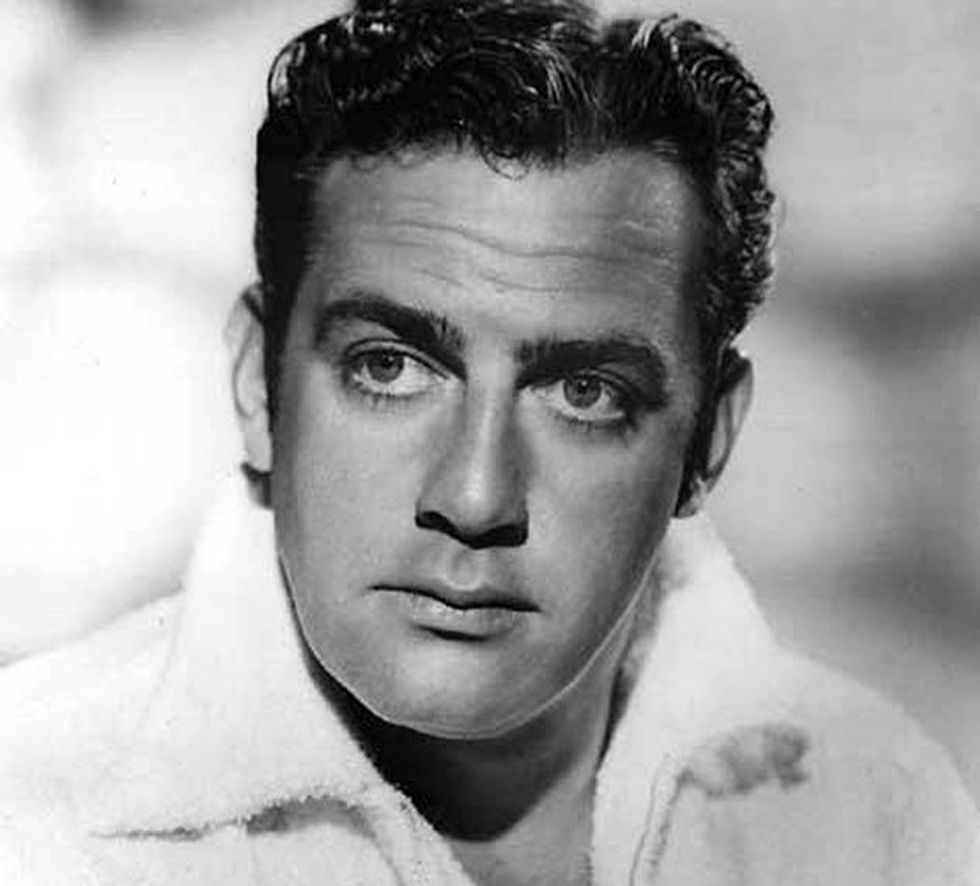
In the 1950s and 1960s, American TV audiences enthusiastically welcomed Raymond Burr into their homes, first as ace defense attorney Perry Mason, who never lost a case, then as detective Robert Ironside. These heroic characters stand in stark contrast to Burr's most famous film role, as the sinister Lars Thorwald in the Hitchcock classic Rear Window. Would mid-century viewers have so readily accepted Burr as a hero if they knew he was gay? Most likely not. Burr took an unusual approach to covering up this fact -- while other gay actors would go on studio-arranged dates with women, Burr (or perhaps a publicist) made up dead wives out of the whole cloth. He claimed he had been married to a Scottish actress who was killed in the same 1943 plane crash that took the life of movie star Leslie Howard. A second dead wife and a dead son later became part of his story, but like the first wife, they never existed. In reality, Burr was married once, briefly, to an aspiring actress, and they were divorced. Despite his prevarications, he appears to have been a likable man, and he had a happy long-term relationship with Robert Benevides, an actor who became his business manager as well as his life partner. They met early in the run of Perry Mason and remained together until Burr's death in 1993. -- T.R.
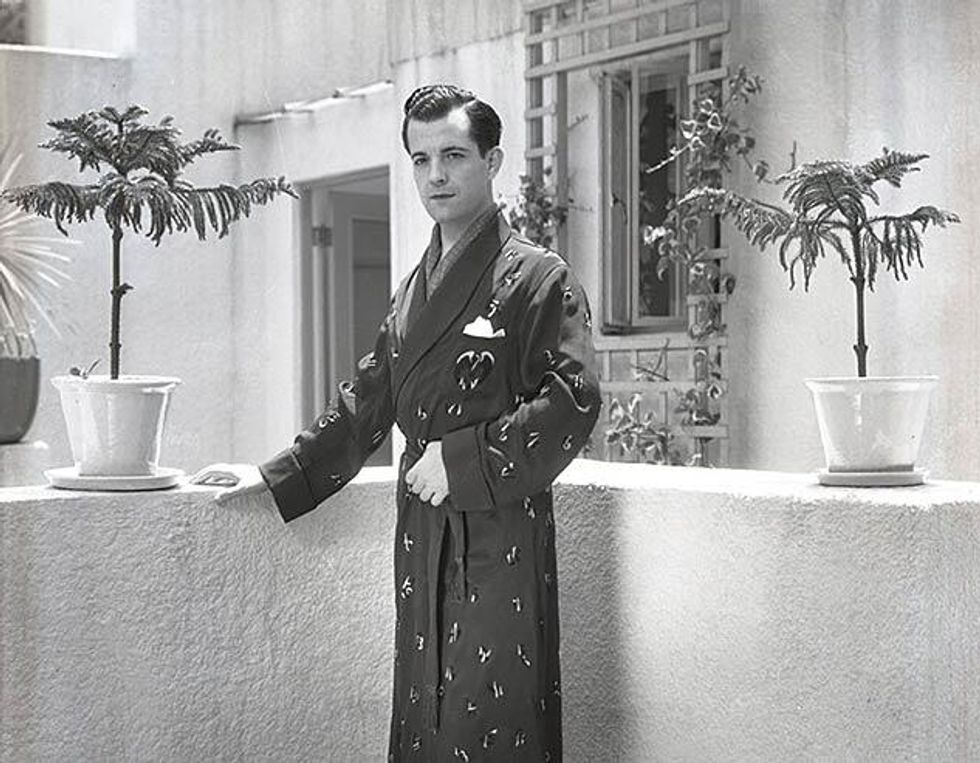
Novarro, a rival to Rudolph Valentino as the top heartthrob of silent films, is remembered today, sadly, mostly for his brutal murder in 1968. Two brothers, one of them an occasional hustler, were convicted of the crime, about which many apocryphal tales have spread; read more about that here. But Novarro was also a capable actor and a major star of the silents who transitioned successfully into sound films. After his stardom waned in the mid-1930s, he kept on working in supporting roles, and he even did TV guest shots into the '60s. He had several same-sex relationships; one of the most important ones was with journalist and publicist Herbert Howe in the 1920s. Studios occasionally concocted a straight "romance" for Novarro but most of the time attributed his bachelorhood to his devout Catholic faith -- he did try at one point to enter a monastery -- and his devotion to his parents, brothers, and sisters. He made many hit films, but the most notable and enduring one is the 1925 silent version of Ben-Hur. That movie may soon attract new audiences, as musician Stewart Copeland -- the Police drummer turned film, television, and theater composer -- has overseen a digital restoration of it and composed a new score for accompaniment. The Chicago Symphony Orchestra, joined by Copeland, will perform the score when the film is shown Tuesday in the Windy City. Read a feature about the project and more about Novarro here. -- T.R.

Was J. Edgar Hoover a tyrant because he was a repressed, closeted gay man or was he simply a horrible person? That's the question writers and directors have asked since the powerful FBI director died in 1972. Everyone from Ethel Merman to the Mattachine Society's Harry Hay has been quoted as saying Hoover was gay, even if he didn't himself acknowledge or accept it. While many have speculated on Hoover participating in gay sex parties and limo trysts with young men, there is little disagreement that he had a long, tumultuous, passionate relationship with his deputy at the FBI, Clyde Tolson. They traveled everywhere together, held hands, and both helped cement the FBI's status as a frightening bureaucracy that cracked down on minorities, including gays and lesbians. In Clint Eastwood's J. Edgar, written by Academy Award-winning out screenwriter Dustin Lance Black, Edgar (played by Leonardo DiCaprio) lays a big one on Tolson (Armie Hammer), and there's no doubt their real relationship crossed first base. -- Neal Broverman
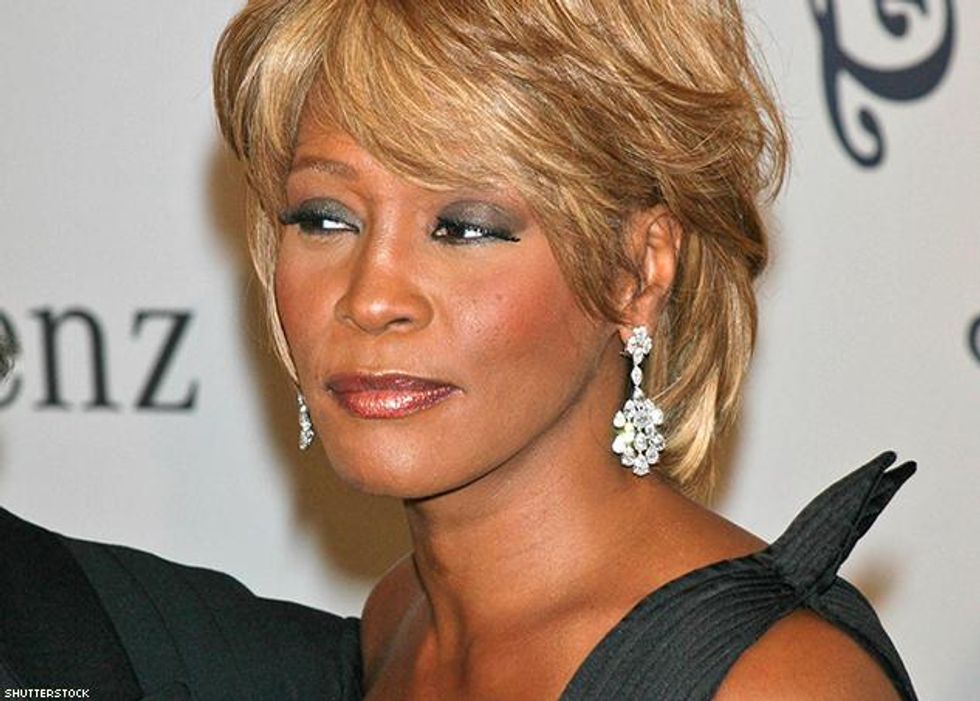
Rumors about Whitney Houston's sexual orientation swirled throughout her lifetime, and were routinely rejected or hushed by Houston and those around her. However, a new documentary Whitney: Can I Be Me? shed a light on the homophobia and biphobia that plagued the singer throughout her career. It may have even lead to her death, since her mother's antigay views helped distance Houston from her beloved friend, manager, and protector, Robyn Crawford.
"Robyn provided a safe space for her. She loved her, cared for her, was a friend to her, and didn't want to ever disappoint her," said Allison Samuels, a family friend, in the film. "In that, Whitney found safety and solace. I don't think that [Houston] was gay; I think she was bisexual...Whitney loved to be held and she loved to be embraced and she wanted to feel protected."
Samuels' testament about the intimate relationship between Houston and Crawford corroborates information from Houston's ex-husband, Bobby Brown. In his 2016 memoir, Every Little Step, Brown claimed Houston was bisexual and had a romance with Crawford. "I really feel that if Robyn was accepted into Whitney's life, Whitney would still be alive today," he told Us Weekly. "She didn't have close friends with her anymore."
Want more breaking equality news & trending entertainment stories?
Check out our NEW 24/7 streaming service: the Advocate Channel!
Download the Advocate Channel App for your mobile phone and your favorite streaming device!